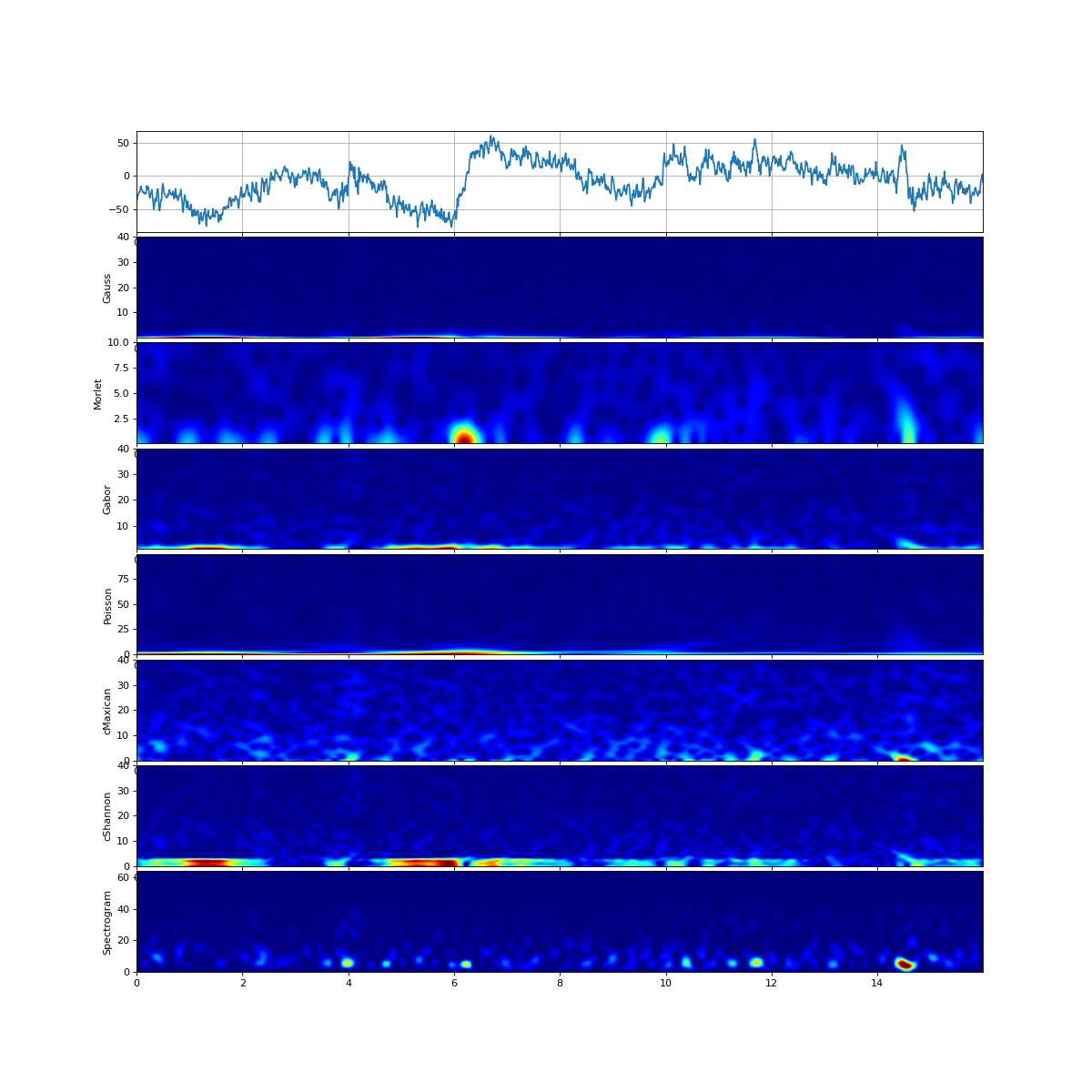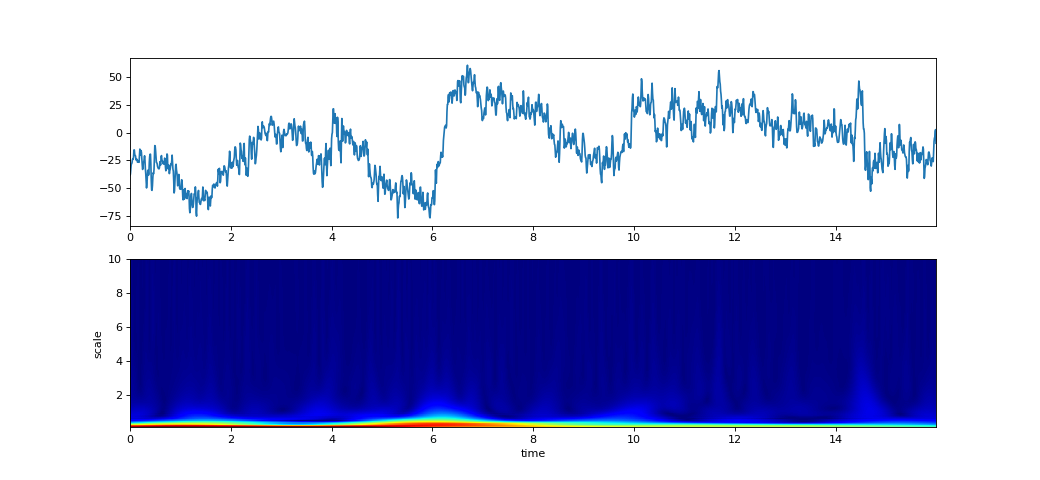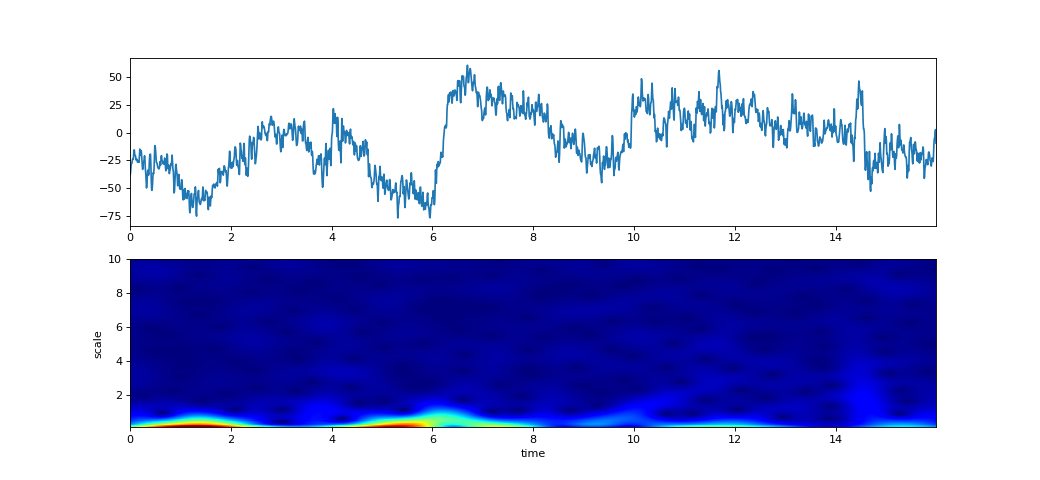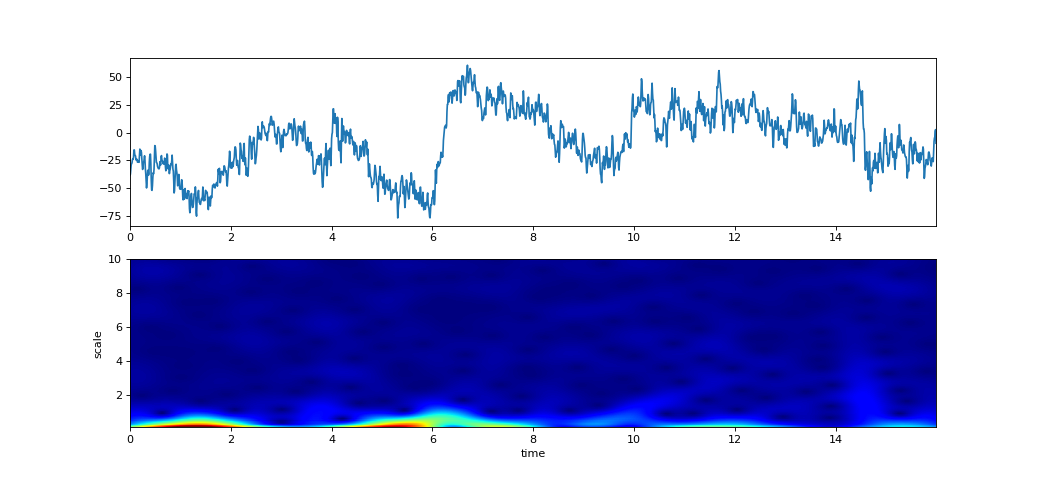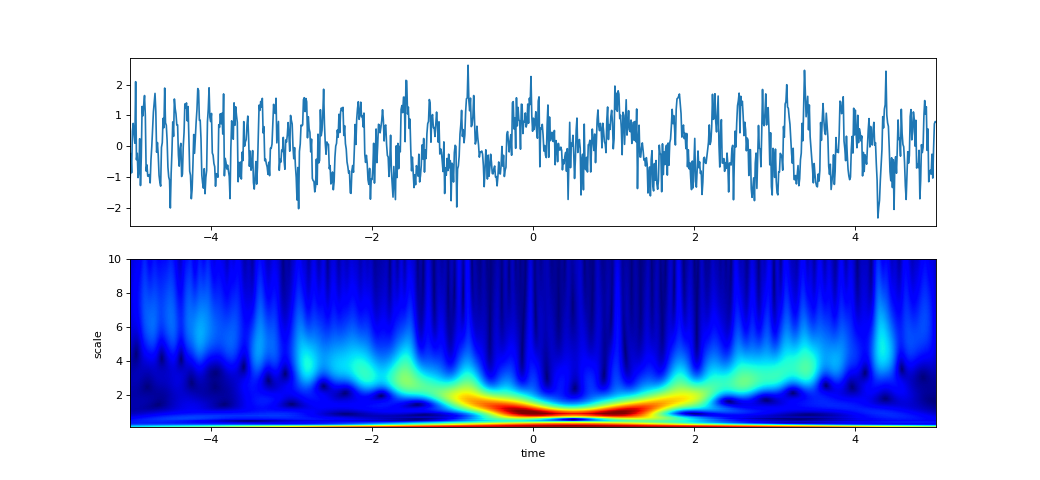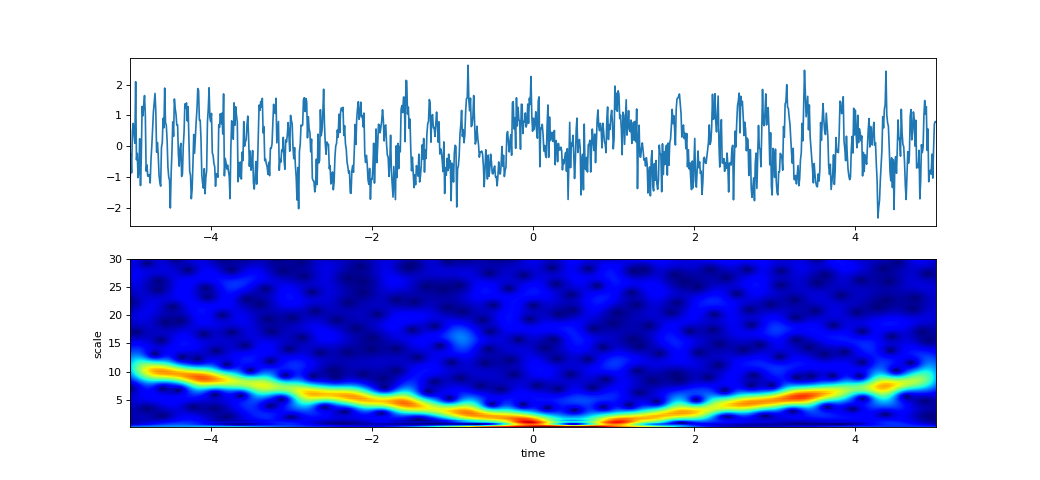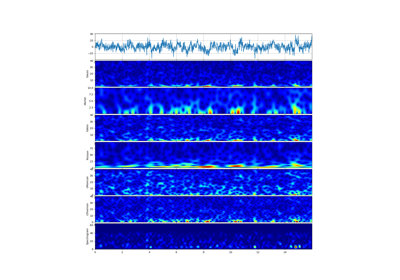spkit.cwt.ScalogramCWT¶
- spkit.cwt.ScalogramCWT(x, t, wType='Gauss', fs=128, PlotPSD=False, PlotW=False, fftMeth=True, interpolation='sinc', **Parameters)¶
Scalogram using Continues Wavelet Transform
Compute scalogram using Continues Wavelet Transform for wavelet type (wType) and given scale range
- Parameters:
- x: array-like,
input signal,
- t: array-like
time array corresponding to x, same length as x
- fs: int,
sampling rate
- PlotPSD: bool, default=False
if True, plot Scalogram
- PlotWbool, default=False
if True, plot wavelets in time and frequecy with different scalling version
- fftMeth:bool, default=True
if True, FFT method is used, else convolution method is used. FFT method is faster.
- interpolation: str, or None,
interpolation while ploting Scalogram. Only used for plotting
- Parameters for different wavelet functions
Common Parameters for all the Wavelet functions
- farray
array of frequency range to be analysed, e.g. np.linspace(-10,10,2*N-1), where N = len(x)
if None, frequency range of signal is considered from -fs/2 to fs/2
(fs/n1*(np.arange(n1)-n1/2))
- A list of wavelets will be generated for each value of scale (e.g. f0, sigma, n etc)
- wType: {‘Gauss’,’Morlet’,’Gabor’,’Poisson’,’cMaxican’,’cShannon’}
Type of Complext Wavelet Function
lower case str is acceptable, and a few common names are mapped to them too
‘Gauss’, ‘gauss’, ‘gaussian’ are same
‘cMaxican’, ‘maxican’, ‘cmaxican’ are same
‘cShannon’ ‘shannon’ are same
- 1. Gauss: (wType ==’Gauss’)
f0 = array of center frquencies for wavelets, default: np.linspace(0.1,10,100) [scale value] Q = float or array of q-factor for each wavelet, e.g. 0.5 (default) or np.linspace(0.1,5,100)
: if array, should be of same size as f0
t0 = float=0, time shift of wavelet, or phase shift in frquency, Not suggeestive to change
- 2. For Morlet: (wType ==’Morlet’)
sig = array of sigma values for morlet wavelet, default: np.linspace(0.1,10,100) [scale value] fw = array of frequency range, e.g. np.linspace(-10,10,2*N-1), where N = len(x) ref: https://en.wikipedia.org/wiki/Morlet_wavelet
- 3. For Gabor: (wType ==’Gabor’)
Gauss and Gabor wavelet are essentially same f0 = array of center frquencies for wavelets, default: np.linspace(1,40,100) [scale value] a = float, oscillation parameter, default 0.5,
could be an array (not suggeestive), similar to Gauss, e.g np.linspace(0.1,1,100) or np.logspace(0.001,0.5,100)
t0 = float=0, time shift of wavelet, or phase shift in frquency. Not suggeestive to change
- 4. For Poisson: (wType==’Poisson’)
n = array of intergers, default np.arange(100), [scale value] method = 1,2,3, different implementation of Poisson funtion, default 3 keep the method=3, other methods are under development and not exactly compatibile with framework yet,
- 5. For Complex MaxicanHat: (wType==’cMaxican’)
f0 = array of center frquencies for wavelets, default: np.linspace(1,40,100) [scale value] a = float, oscillation parameter, default 1.0, could be an array (not suggeestive)
ref: https://en.wikipedia.org/wiki/Complex_Mexican_hat_wavelet
- 6. For Complex Shannon: (wType==’cShannon’)
f0 = array of center frquencies for wavelets, default: 0.1*np.arange(10) [scale value], fw = BandWidth each wavelet, default 0.5, could be an array (not suggeestive)
- Returns:
- XW: Complex-valued matrix of time-scale - Scalogram, with shape (len(S), len(x)). scale vs time
- Sscale values
Examples
import numpy as np import matplotlib.pyplot as plt from spkit.cwt import ScalogramCWT # Example 1 - EEG Signal import spkit as sp from spkit.cwt import compare_cwt_example x,fs = sp.data.eeg_sample_1ch(ch=0) t = np.arange(len(x))/fs print(x.shape, t.shape) compare_cwt_example(x,t,fs=fs) # Example 2.1 - different wavelets XW,S = ScalogramCWT(x,t,fs=fs,wType='Gauss',PlotPSD=True) # Example 2.2 - set scale values and number of points nS = 100 f0 = np.linspace(0.1,10,nS) # range of scale values - frquency Q = np.linspace(0.1,5,nS) # different q-factor for each scale value # Q = 0.5 XW,S = ScalogramCWT(x,t,fs=fs,wType='Gauss',PlotPSD=True,f0=f0,Q=Q) # Example 2.3 - plot scalled wavelets too XW,S = ScalogramCWT(x,t,fs=fs,wType='Gauss',PlotPSD=True,PlotW=True,f0=f0,Q=Q) # Example 3 t = np.linspace(-5, 5, 10*100) x = (np.sin(2*np.pi*0.75*t*(1-t) + 2.1) + 0.1*np.sin(2*np.pi*1.25*t + 1) + 0.18*np.cos(2*np.pi*3.85*t)) xn = x + np.random.randn(len(t)) * 0.5 XW,S = ScalogramCWT(xn,t,fs=100,wType='Gauss',PlotPSD=True) # Example 4 f0 = np.linspace(0.1,30,100) Q = np.linspace(0.1,5,100) # or = 0.5 XW,S = ScalogramCWT(xn,t,fs=128,wType='Gauss',PlotPSD=True,f0=f0,Q=Q)
